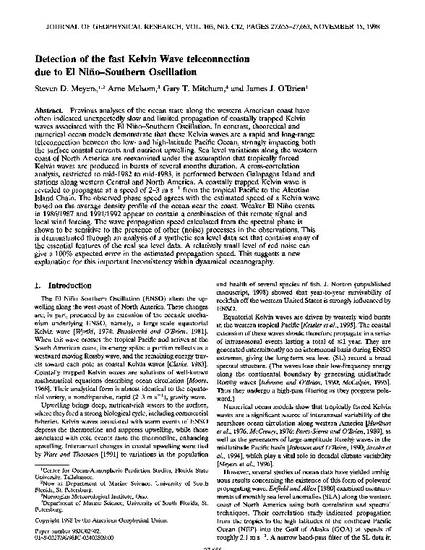
Previous analyses of the ocean state along the western American coast have often indicated unexpectedly slow and limited propagation of coastally trapped Kelvin waves associated with the El Niño‐Southern Oscillation. In contrast, theoretical and numerical ocean models demonstrate that these Kelvin waves are a rapid and long‐range teleconnection between the low‐ and high‐latitude Pacific Ocean, strongly impacting both the surface coastal currents and nutrient upwelling. Sea level variations along the western coast of North America are reexamined under the assumption that tropically forced Kelvin waves are produced in bursts of several months duration. A cross‐correlation analysis, restricted to mid‐1982 to mid‐1983, is performed between Galapagos Island and stations along western Central and North America. A coastally trapped Kelvin wave is revealed to propagate at a speed of 2–3 m s−1 from the tropical Pacific to the Aleutian Island Chain. The observed phase speed agrees with the estimated speed of a Kelvin wave based on the average density profile of the ocean near the coast. Weaker El Niño events in 1986/1987 and 1991/1992 appear to contain a combination of this remote signal and local wind forcing. The wave propagation speed calculated from the spectral phase is shown to be sensitive to the presence of other (noise) processes in the observations. This is demonstrated through an analysis of a synthetic sea level data set that contains many of the essential features of the real sea level data. A relatively small level of red noise can give a 100% expected error in the estimated propagation speed. This suggests a new explanation for this important inconsistency within dynamical oceanography.
Journal of Geophysical Research, v. 103, no. C12, p. 27655-27663
Copyright 1998 by the American Geophysical Union.
Available at: http://works.bepress.com/gary_mitchum/2/
